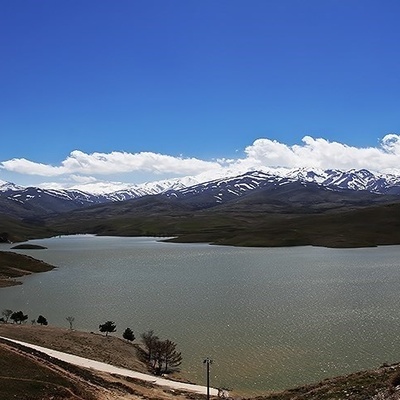The Mesr Desert is located in the village of Mesr, in Isfahan Province. This beautiful desert is one of Isfahan’s natural attractions and welcomes tourists and desert enthusiasts every year. Join us to learn more about this stunning desert.

Mesr is a village in Isfahan Province, located 55 kilometers from the Khur and Biabanak region and 421 kilometers from the city of Isfahan. The Mesr Desert lies near this village along the route from Damghan to Na'in and Isfahan. The founder of this village was a shepherd named Yousef. The village’s water supply comes from deep wells dug in the area, which is why it was once called “Chah Deraz” (Long Well) by the locals. However, since Yousef disliked that name, he asked the people to call the village “Mesr” (Egypt).
In the past, villagers were engaged in agriculture, animal husbandry, and camel rearing. In recent years, especially during the tourist season, they have turned to occupations related to providing accommodation and services for travelers. The houses in the village are built with humble beauty, much like other desert settlements in Iran—mud-brick walls, domed roofs, and wooden doors, all harmoniously blending with the desert landscape.
Next to each home, there is often a small stable where residents keep turkeys, goats, and occasionally camels. Upon entering the village, the simplicity and charm of the local mud-brick houses, domed roofs, and wooden doors will immediately catch your attention. Among nature lovers, the village is also known as the “Sand Sea of Mesr Desert.”
If you visit this desert village, do not miss the stunning sunset and its star-filled night sky. Attractions like the Salt Lake, Dr. Fish Spring, Burnt Palm Grove, and the Mesr Desert reed beds are unique to this area and unlike anywhere else in Iran.


Mesr Desert is located near the village of Mesr, 55 kilometers from Khur, along the road connecting Damghan, Na'in, and Isfahan. It is one of the top attractions in Mesr village and one of the most stunning natural wonders of Iran, popular among nature enthusiasts and desert trekkers.
This beautiful desert is surrounded by mountain ranges on the west, southwest, and southeast sides, which are part of the Central Iranian Plateau mountain ranges. Natural depressions at the base of these mountains have formed striking sand dunes, turning the area into a favored destination for desert tourism and exploration.


The sand dunes are the main attraction of Mesr Desert—waves of flowing sand reaching right up to the village houses. Witnessing the vast golden dunes is an unforgettable experience.
Chale Selkanun is located south of the Great Central Desert of Iran and north of Mesr village. It’s considered one of the must-see spots in the area. “Chale” refers to a low-lying area compared to the surrounding land. Chale Selkanun is a beautiful depression surrounded by sand dunes that create a picturesque scene.
The Selkanun Salt Lake lies northeast of Mesr village, and its water is fed by agricultural runoff. In 1976, a flood in the Mesr region created a large lake here, initially called “Seil Kanun” (place of the flood), which eventually became known as “Selkanun.”
To reach Chale Selkanun and the Selkanun Salt Lake, head north from Mesr village. After passing Farahzad village, take the fork towards Chale Selkanun. One route leads to Chale Selkanun, while the northeast path leads to the salt lake, Takht-e Aroos (Bride’s Throne), and Takht-e Abbasi (Abbasi’s Throne).




Animal species in the Mesr Desert include wildcats, sand foxes, horned vipers, rabbits, caracals, birds of prey, and various reptiles.
Camel riding is one of the most enjoyable activities in the Mesr Desert, with designated areas near the village for tourists. Four-wheel motorbikes let visitors experience driving across the dunes. Sandboarding is another thrilling sport in the Mesr Desert.


Mesr Desert has a hot and dry climate. During the warm months, temperatures can be very high, while cooler seasons bring milder conditions. Generally, days are hot due to sunlight, but temperatures drop significantly after dark.
The best time to visit is from November to mid-May. However, the raw beauty, untouched landscapes, and mesmerizing starry skies of the Mesr Desert attract visitors year-round.



